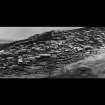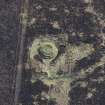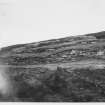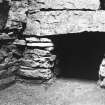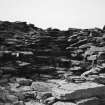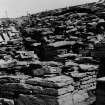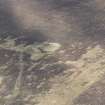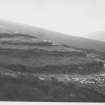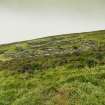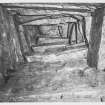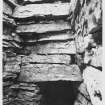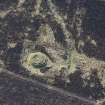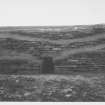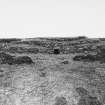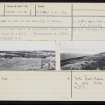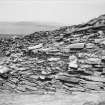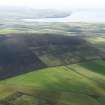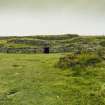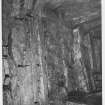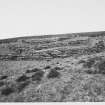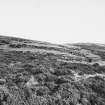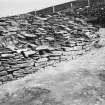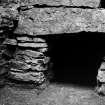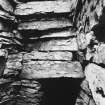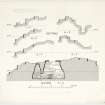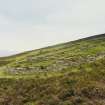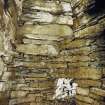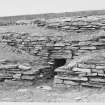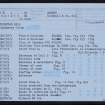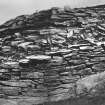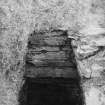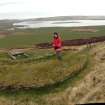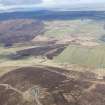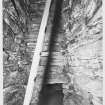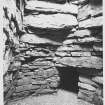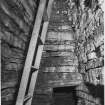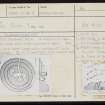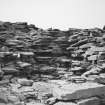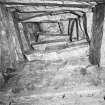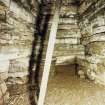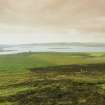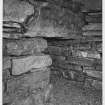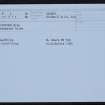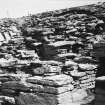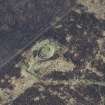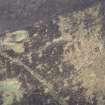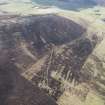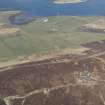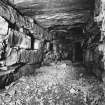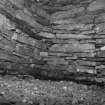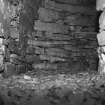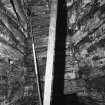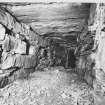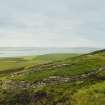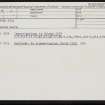Following the launch of trove.scot in February 2025 we are now planning the retiral of some of our webservices. Canmore will be switched off on 24th June 2025. Information about the closure can be found on the HES website: Retiral of HES web services | Historic Environment Scotland
Wideford Hill
Chambered Cairn (Neolithic)
Site Name Wideford Hill
Classification Chambered Cairn (Neolithic)
Canmore ID 2483
Site Number HY41SW 1
NGR HY 4090 1211
Datum OSGB36 - NGR
Permalink http://canmore.org.uk/site/2483
- Council Orkney Islands
- Parish Kirkwall And St Ola
- Former Region Orkney Islands Area
- Former District Orkney
- Former County Orkney
HY41SW 1 4090 1211.
(HY 4090 1211) Chambered Mound (NR)
OS 6" map, Orkney, 2nd ed., (1903).
Wideford Hill Chambered Cairn. A conspicuous megalithic chambered cairn with three concentric walls. The burial chamber, with three large calls leading off it,is entered by a passage. It is of neolithic date c.2,000 B.C.
RCAHMS 1946; V G Childe and W D Simpson 1961; A S Henshall 1963; H E Kilbride-Jones 1973.
This cairn has been built on a platform constructed on the western slope of a hill.
Re-surveyed at 1/2500.
Visited by OS (GHP) 5 April 1964.
'The Orcadian' reported the excavation of a subterranean chamber at Wideford Hill.
Publication Account (1996)
Though not an easy walk, the reward is a tomb in excellent condition and, on a clear day, a beautiful view over the Bay of Firth. This is another Maes Howe design and, as at Quoyness (no. 84), all three wall-faces are visible, representing the various stages of construction of the cairn. The chamber with its three side-cells is dug back into the hillside and the entrance is downslope (although entry is now through a hatch in the roof, the original passage being only 0.6m high). Excavation in the 19th century found the cells to be empty, although the main chamber has been deliberately filled with rubble.
On the northern lower slope of Wideford at Quanterness (HY 417129), there is a large mound which, though inaccessible, contains a magnificent tomb of Maes Howe design, with six cells opening off the main chamber. Recent excavation of 80% of the tomb (the rest left deliberately for posterity) yielded human bones estimated to belong to 157 individuals, who had been brought into the tomb in skeletal state as at Isbister (no. 85). Unlike Wideford the tomb had not been closed by infilling. Radiocarbon dates indicate that Quanterness was built around 3400 BC and remained in use for about a thousand years.
Information from ‘Exploring Scotland’s Heritage: Orkney’, (1996).
Orkney Smr Note
Excavation report of 1849 by Petrie. [R1]
There is a short discussion of the chamber contents and
Petrie's belief that the stone filling was deliberate. [R2]
Chambered mound, near Quanterness, lies on the Western
shoulder of the hill at an elevation of about 400ft above sea
level and about midway up the slope of the hill. Overall the
mound at present measures N-S 46ft, E-W 41ft, NW-SE 46ft, NE-SW
48ft; but its original outline has already been much changed by
excavations carried out, it is believed, by G Petrie. One chamber
is at present exposed and at present the floor level of this
chamber opens to three definite compartments or passages are still
clearly defined. A fourth passage to another apartment is
obscured by fallen stones and the debris that half fills the
chamber at that end. This chamber is roughly oblong with a
somewhat curved wall and lies with its main axes, measuring approx
10ft, lying almost due N and S and it is roughly 5ft wide at floor
level contracting as it is ascending to almost 2.5ft and it is
about 7ft high with no indication of the manner in which it was
roofed. At the N end of this chamber is a narrow passage 21in
wide and no more than 15in in depth and gives no admission to a
small beehive chamber which measures roughly 5.75ft long by 3.5ft
broad at the widest parts and rises to a height of 5ft 9in. This
is the only chamber in the mound to which access, with great
difficulty, is possible. [R3]
Text abstracted from previous authorities. [R4]
Wideford Hill Cairn is situated on the steep W slope of the
aformentioned hill. The cairn is almost circular, measuring 45ft
NE-SW and 41.5ft NW-SE. There is a wall-face encircling the whole
structure, and two more wall-faces, 4ft and 4.5ft apart, within
the cairn, which is made up of loosely laid flat slabs. The
burial chamber, with three large cells leading off it, is entered
by a passage about 17.5ft long. Animal bones and teeth were found
in the rubble. [R5]
Information from Orkney SMR [n.d.]





























































